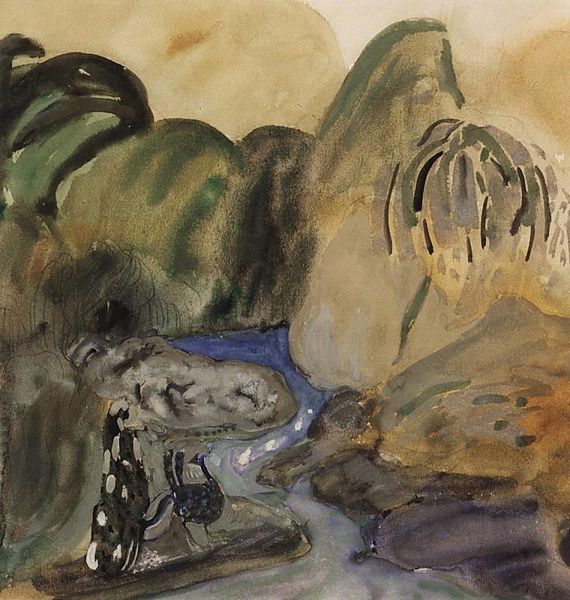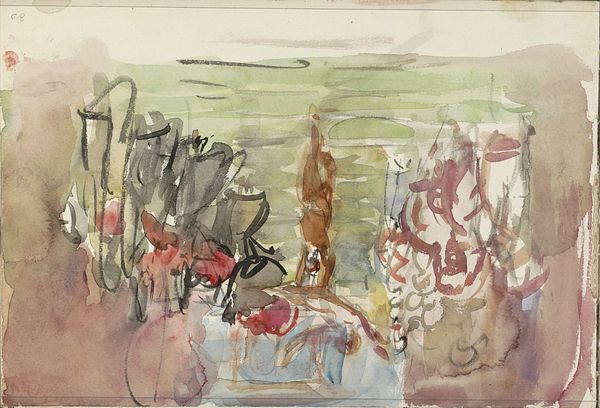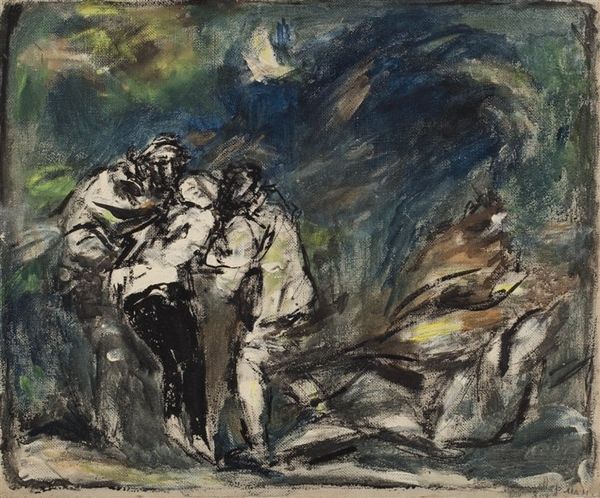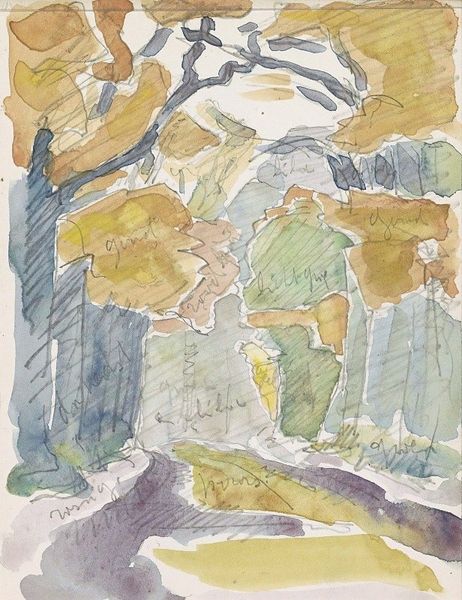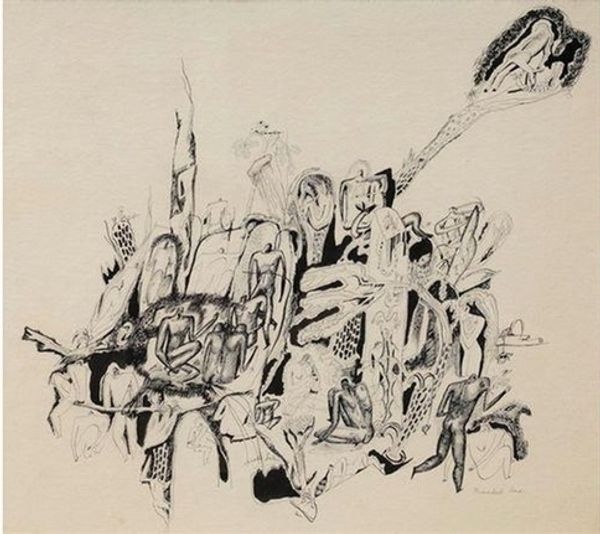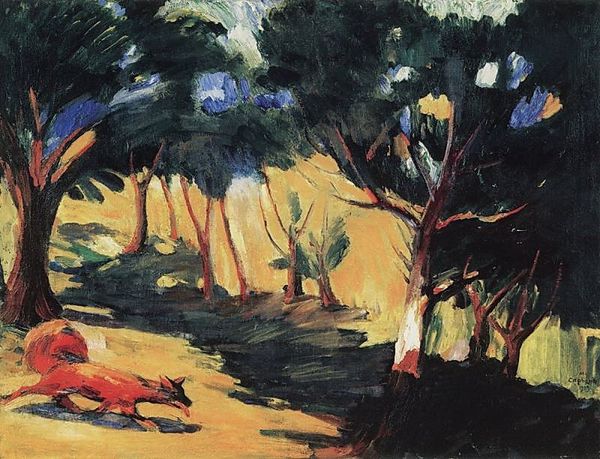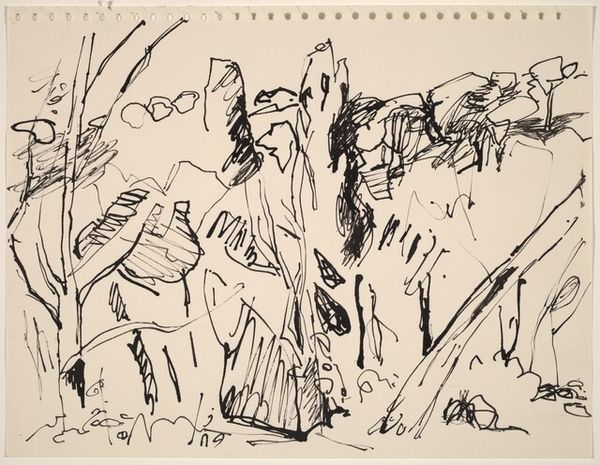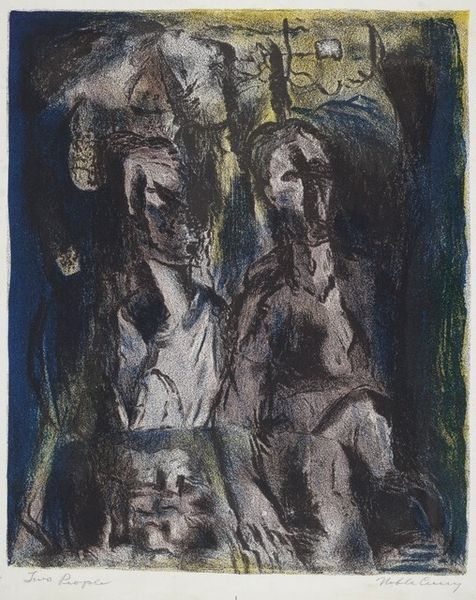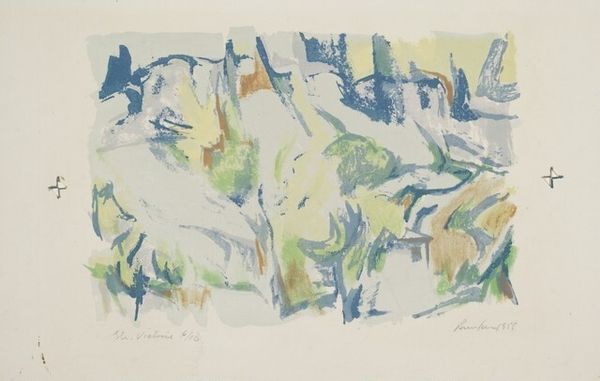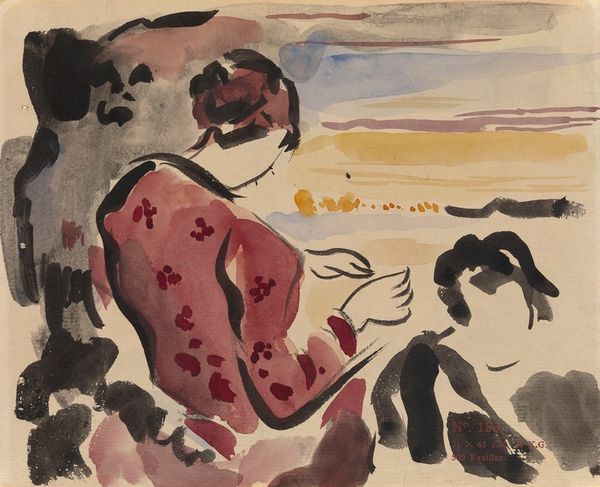
watercolor
#
animal
#
landscape
#
figuration
#
oil painting
#
watercolor
#
expressionism
#
horse
#
men
#
expressionist
Copyright: Public domain US
Editor: So this watercolor work, "Riders at the River" by Martiros Sarian from 1904, is interesting. The horses and riders feel almost like a single, amorphous mass, and the colors give it a dreamy, otherworldly feel. What can you tell me about this piece, perhaps about its role in art history or its cultural context? Curator: The piece definitely evokes a dreamlike state, doesn't it? Sarian was working at a pivotal time when artists were grappling with representing subjective experience and national identity through modern art. Armenia, at the turn of the century, was divided between the Russian and Ottoman empires, and the expressionist style offered Sarian a way to convey emotional and psychological truths about Armenian life without direct, overt political statements that could be censored. Editor: That’s fascinating. I wouldn't have picked up on the national identity aspect on my own. Does the style he uses, that looseness of form, play a role in that? Curator: Absolutely. Expressionism, in its break from traditional academic representation, allows Sarian to create a collective feeling, a mood more than a literal depiction. This painting can be seen as reflecting both the beauty and the precariousness of a people facing displacement and cultural suppression. Editor: So it’s not just a landscape or a genre scene, it’s also a statement, a quiet act of cultural preservation? Curator: Precisely. Museums then, and now, become spaces where these fragmented identities find visibility and resonance. Think about who had access to art spaces then, and who felt represented – or excluded – by what was on display. It changes our perception, doesn't it? Editor: It really does. It adds another layer of understanding. I’ll definitely be more conscious of the stories behind the style now! Curator: And that is why we examine the power of visual culture! Glad we could share our views.
Comments
No comments
Be the first to comment and join the conversation on the ultimate creative platform.
